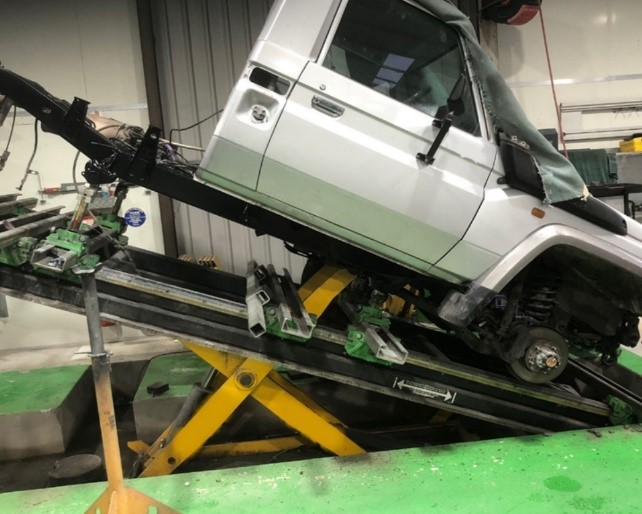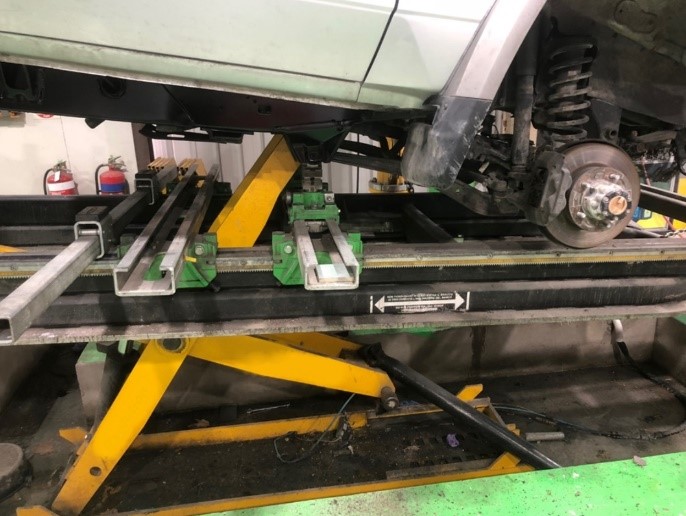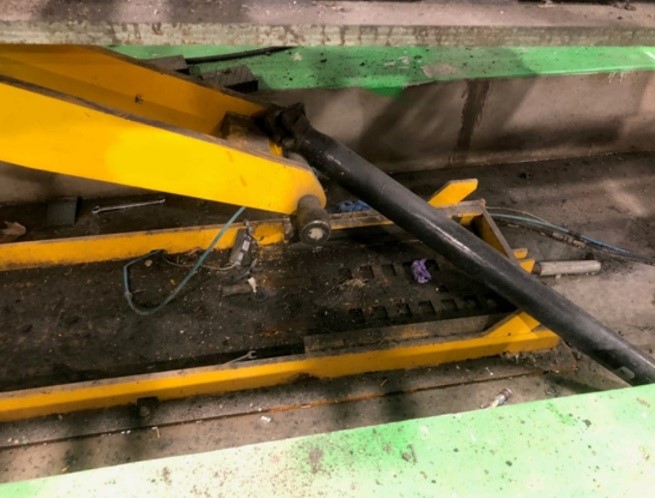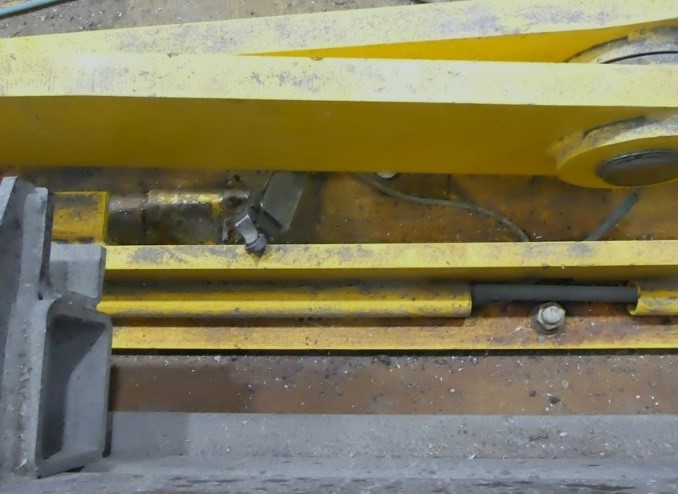A motor vehicle lift bench partially collapsed as a result of being raised beyond its maximum lift height. Lift benches should be maintained regularly to ensure functionality of all critical components.
A motor vehicle lift bench partially collapsed as a result of being raised beyond its maximum lift height. The motor vehicle which was on the bench was damaged as a result. Fortunately, no worker was injured in the process.
Motor vehicle lift benches are commonly used in the automotive repair industry for straightening of motor vehicle chassis. Lift benches are designed and built to lift motor vehicles onto jig attachments so that chassis straightening can be carried out.
A common lift bench comprises of a lower frame which is secured to the ground and an upper frame that supports the vehicle. The upper and lower frames are connected by a pair of lifting arms configured like a scissor. Opposite to the pinned ends, one arm slides along a guide channel within the lower frame and the other within the upper frame.
A hydraulic cylinder attached to the lower pair of arms provides the motion to raise or lower the bench. A safety pawl on the lower frame locks the bench into position at different heights and prevents the bench from dropping in the event of an unplanned loss of hydraulic control.
Vertical travel of the bench is limited by a switch (positioned on the lower frame) activated by contact with a lifting arm when the bench reaches the maximum permissible height. Operation of the lift bench is via push button control.
The lift bench should be maintained regularly to ensure functionality of all critical components.


Probable causes
It appears that waste metal pieces had accumulated on the lower frame due to a lack of housekeeping and a small piece of metal offcut was caught between the limit switch and the lifting arm when they came into contact at the maximum bench height. The metal offcut between the limit switch and the arm caused the support of the limit switch to be sheared off. As a result, the limit switch was not activated. This allowed the bench to continue lifting to a point where the lifting arms dislodged from the guide channels.
The weight of the motor vehicle on the bench caused the bench to partially collapse on the end where the support arms had dislodged.
The operator of the lift bench had relied upon the limit switch stopping the lifting operation.


Action required
If you own or operate a motor vehicle lift bench, ensure that:
- the lift bench is kept in a clean condition with no waste material built-up on the lower frame
- the lift bench is serviced and maintained as per manufacturer recommendations (refer to the user/operation manual, or advice from a competent person)
- each operator is trained in the lift bench safe operation and instructed on working load limit (WLL) and maximum lift height
- ensure that labelling/signage of WLL is in a prominent location on the device
- pre-operational checks are carried out to ensure that critical components like the limit switch are in place, undamaged and functioning correctly (e.g. run the device first through its full cycle without a vehicle).


